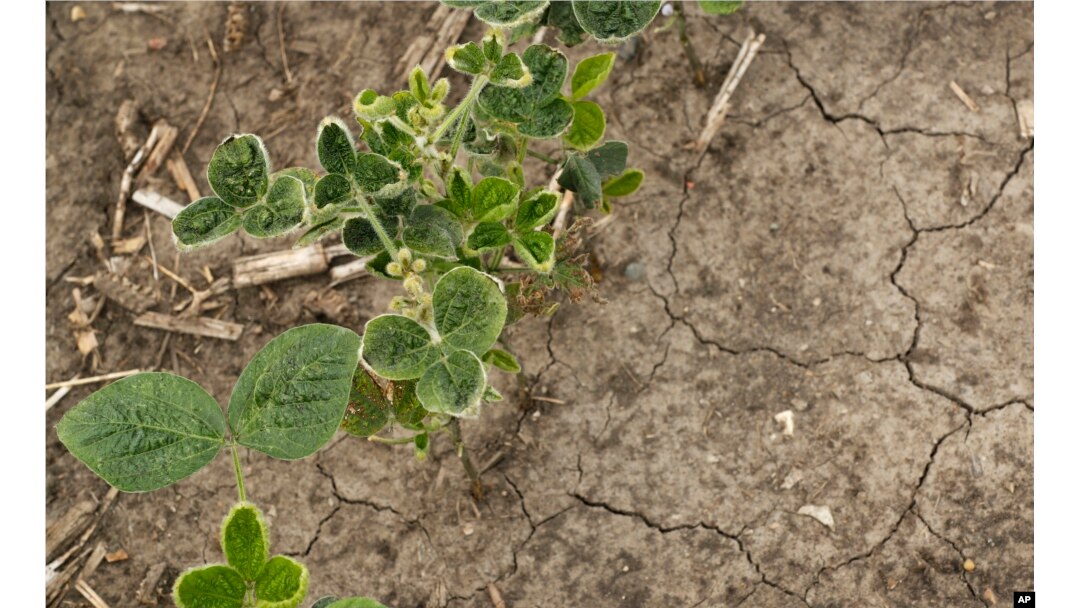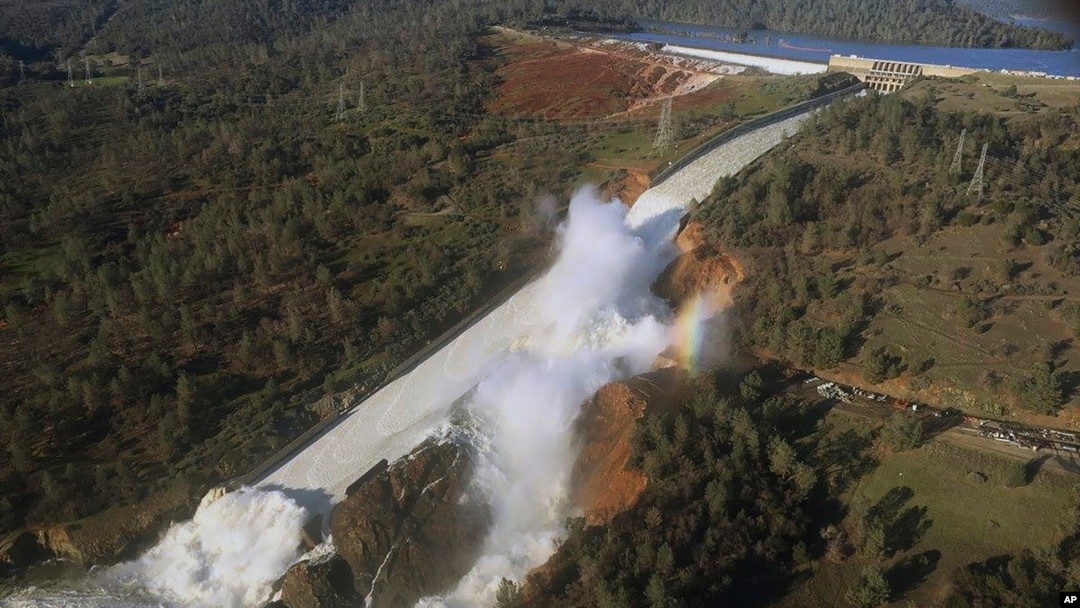Drought in the United States and East Africa. Floods in Peru and Bangladesh. Heatwaves in Europe and China. Even unusual cloudiness in Japan.
Climate change left its fingerprints on some of the biggest climate extremes of 2017, according to a new assessment.
The report highlights how a changing climate has real-life implications for the professionals who have to deal with the consequences. Case in point: water managers faced with record-breaking rainfall that overwhelmed a faltering dam in California.
"This is not a problem for the future. It's a problem for today," said Penn State University climate scientist David Titley, who was not involved with the research.
Seventeen studies from 10 countries make up the report, which the American Meteorological Society has been publishing annually since 2011.
They tease apart the factors that led to each extreme event and estimate the extent to which climate change contributed.

In this July 26, 2017, photo, soybeans grow in a farm field near Indianola, Iowa. Drought conditions are getting worse in several states, and extreme heat and weeks with little rain have begun to stress corn, soybeans, wheat and livestock.
For example, drought parched the U.S. Northern Great Plains in the summer of 2017, drying up farms and ranches, sparking wildfires and racking up more than $2 billion in damage.
The study found that climate change did not affect the amount of rain that fell over the region.
However, higher temperatures brought on by global warming meant that soil dried out quicker. That means a drought of this severity is 1.5 times more likely than it would have been without climate change, the report said.
The report was released at the fall meeting of the American Geophysical Union in Washington, D.C. It comes as U.N. climate negotiators are meeting in Poland.
At that meeting, U.S., Russian and Saudi negotiators aimed to downplay a dire report from the Intergovernmental Panel on Climate Change on the impacts of global warming.
The new study's findings confirm what the IPCC first predicted nearly 30 years ago, said study editor Martin Hoerling, a climate scientist at the National Oceanic and Atmospheric Administration.
According to the group's first report, the impacts seen today are "the type of change in weather and climate that we would experience if we continued on a trajectory of increasing carbon dioxide," Hoerling said. "We have certainly done so, and the consequences are unfolding."
In Oroville, California, last February, the consequences of climate change provided a case study in the challenges of managing critical infrastructure in the face of a changing climate.
A series of torrential rains overfilled the lake behind the Oroville Dam. Because of a damaged spillway, overflowing water threatened to destroy the dam. Nearly 200,000 people downstream were evacuated.
The reservoir was already full when the storm that nearly broke the dam hit. One major reason, the report notes, was the unusual warmth at the end of the previous year. Storms that would normally have fallen as snow instead fell as rain.
Firefighters battle a wildfire as it threatens to jump a street near Oroville, California, July 8, 2017.
Other California dams handled the deluge without incident, however, noted study co-author and hydrologist Julie Vano at the National Center for Atmospheric Research. It was the combination of climate change-driven extreme weather and the damaged spillway that made Oroville a near-disaster.
"With aging infrastructure and more development happening in places where there's risk exposure, we really need to think about how we manage our systems," she said.
The science is progressing to the point where ignoring it could cause legal problems, according to attorney Lindene Patton with the Earth & Water Law Group.
For example, she said, take the owner of a hypothetical chemical plant located near a river.
Engineers typically design safety features based on historical rainfall patterns. "If your calculations are done assuming 1970s rainfall events," Patton said, "then your design would not be prepared for today's climate."
When climate science can show that rainfall patterns have changed, she added, "if you don't use that different set of rainfall tables and a chemical release occurs, then you may find a claim is made against you."


